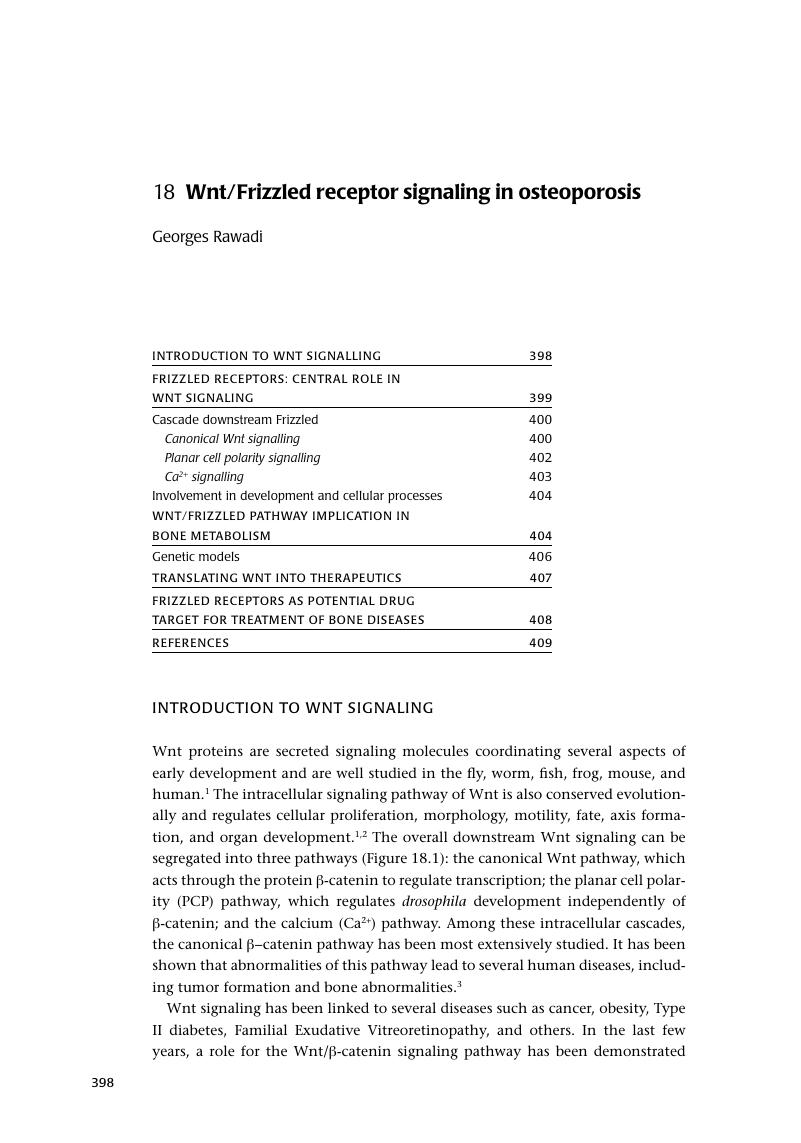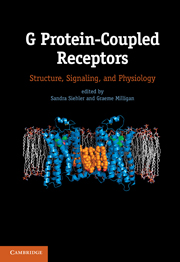Book contents
- Frontmatter
- Contents
- List of Figures
- List of Tables
- List of Contributors
- Introduction
- PART I ADVANCES IN GPCR PROTEIN RESEARCH
- PART II OLIGOMERIZATION OF GPCRS
- PART III GPCR SIGNALING FEATURES
- PART IV LIGAND PHARMACOLOGY OF GPCRS
- PART V PHYSIOLOGICAL FUNCTIONS AND DRUG TARGETING OF GPCRS
- 15 β-Adrenoceptors in cardiovascular and respiratory diseases
- 16 Role of metabotropic glutamate receptors in CNS disorders
- 17 S1P receptor agonists, a novel generation of immunosuppressants
- 18 Wnt/Frizzled receptor signaling in osteoporosis
- Index
- References
18 - Wnt/Frizzled receptor signaling in osteoporosis
from PART V - PHYSIOLOGICAL FUNCTIONS AND DRUG TARGETING OF GPCRS
Published online by Cambridge University Press: 05 June 2012
- Frontmatter
- Contents
- List of Figures
- List of Tables
- List of Contributors
- Introduction
- PART I ADVANCES IN GPCR PROTEIN RESEARCH
- PART II OLIGOMERIZATION OF GPCRS
- PART III GPCR SIGNALING FEATURES
- PART IV LIGAND PHARMACOLOGY OF GPCRS
- PART V PHYSIOLOGICAL FUNCTIONS AND DRUG TARGETING OF GPCRS
- 15 β-Adrenoceptors in cardiovascular and respiratory diseases
- 16 Role of metabotropic glutamate receptors in CNS disorders
- 17 S1P receptor agonists, a novel generation of immunosuppressants
- 18 Wnt/Frizzled receptor signaling in osteoporosis
- Index
- References
Summary

- Type
- Chapter
- Information
- G Protein-Coupled ReceptorsStructure, Signaling, and Physiology, pp. 398 - 414Publisher: Cambridge University PressPrint publication year: 2010



